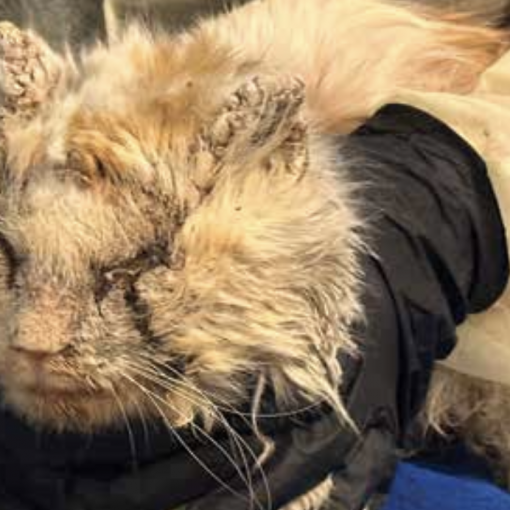By JOE ELMORE,
CHARLESTON ANIMAL SOCIETY PRESIDENT & CEO
THROUGH THE FIRST SIX MONTHS
of 2019, more animals in Charleston County have tested positive for rabies (5) than in any entire year since 2010. That’s alarming and we should be responsible and vigilant in reducing the risk of rabies transmissions.
Vaccinate your pets against rabies and keep them up to date – it’s the law! Don't leave garbage or pet food outside - it can attract wild and stray animals. If you must leave garbage outside, place it in a sturdy can with a tight-fitting lid.
In South Carolina, it appears that raccoons are leading the exposure incidents, although bats lead throughout the country.
Much of the information in this article is sourced from the South Carolina Department of Health (DHEC). Rabies is an acute viral infection that attacks the brain...and is nearly always fatal. The rabies virus may be transmitted when saliva or neural tissue of an infected animal is introduced into the body, usually through a bite or scratch. Fresh saliva and neural tissue can also be infectious if introduced onto a mucous membrane or a fresh break in the skin. Exposure to blood, urine or other bodily fluids from a known or suspected rabid animal are not considered exposures.
Rabies and the Law
Animal (mammal) bites are a reportable condition mandated by South Carolina Law. If an animal is suspected of exposure to Rabies, reports are to be made by phone within 24 hours of a provider’s attendance to the patient, or of the provider receiving a report of a bite from a patient. Providers are required to report animal exposures to DHEC so that animal investigations can be promptly initiated.
Most animal exposures do not require post- exposure prophylaxis (PEP), which is why locating the animal for quarantine or testing may prevent unnecessary PEP.
Rabies from non-bite exposures is rare, however, non-bite exposures as a potential for rabies transmission require assessment. PEP should be considered in the event of the introduction of fresh saliva and/or neural tissue from a known or suspected rabid animal into an open wound, fresh scratch, abrasion, or mucous membrane.
For example, if you interact with an animal and receive licks from that animal that later tests positive for rabies, you could be at risk for exposure.
Playing it Safe
Because of these kinds of risks, it’s always important to wear gloves or use a towel when first caring for a new-found kitten or puppy. Rabies symptoms in an animal may not show for 10 – 30 days – so it is important to take any new animals to your vet for examination and vaccination as soon as possible.
As mentioned earlier, raccoons are a leading carrier of rabies in South Carolina. Never approach or handle an orphaned, injured or sick raccoon, skunk, fox, coyote, mink, weasel, otter, opossum, or any other meat-eating wild animal. Instead, seek advice and help from a wildlife rehabilitation organization. In the Tri-County area, call Keeper of the Wild Wildlife Rescue and Sanctuary at (843) 636-1659.
Bats in the Night
The majority of human rabies cases reported in the United States in the last few decades have been attributed to exposures to bats.
Bat bites cause minimal trauma making identification of a wound difficult. A potential exposure to a bat requires a thorough evaluation if the bat is not available for testing. Bat exposures are defined as:
1. Waking up to find a bat in your room.
2. Finding a bat where children, pets, or persons with impaired mental capacity (intoxicated or mentally disabled) have been left unattended.
3. A pet or person that has been in direct contact with a bat.
If possible, bats involved in potential human exposures should be safely collected and submitted for rabies testing. The majority of bats submitted for testing are not rabid. Timely rabies testing will eliminate the need for risk assessments and unnecessary prophylaxis.





